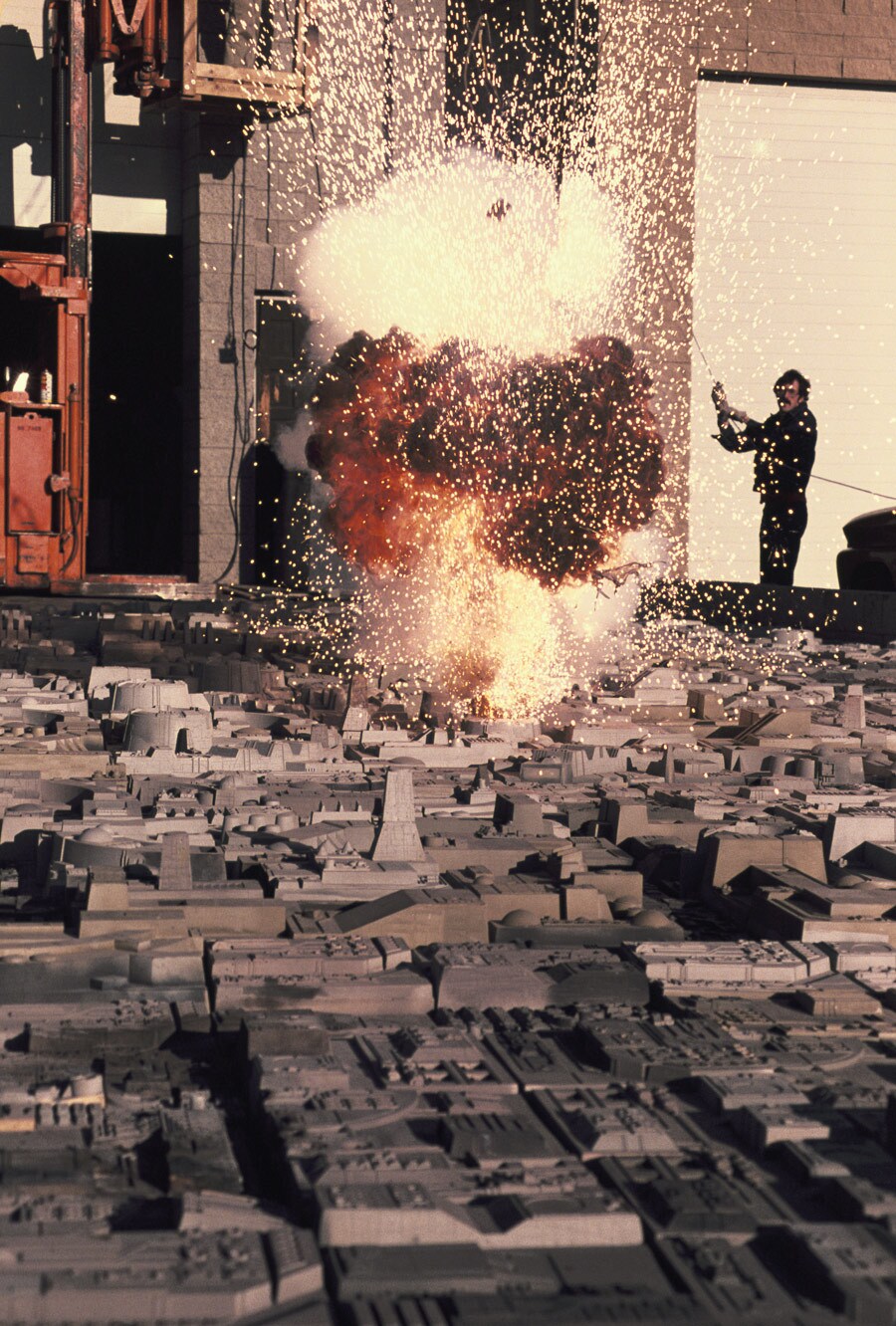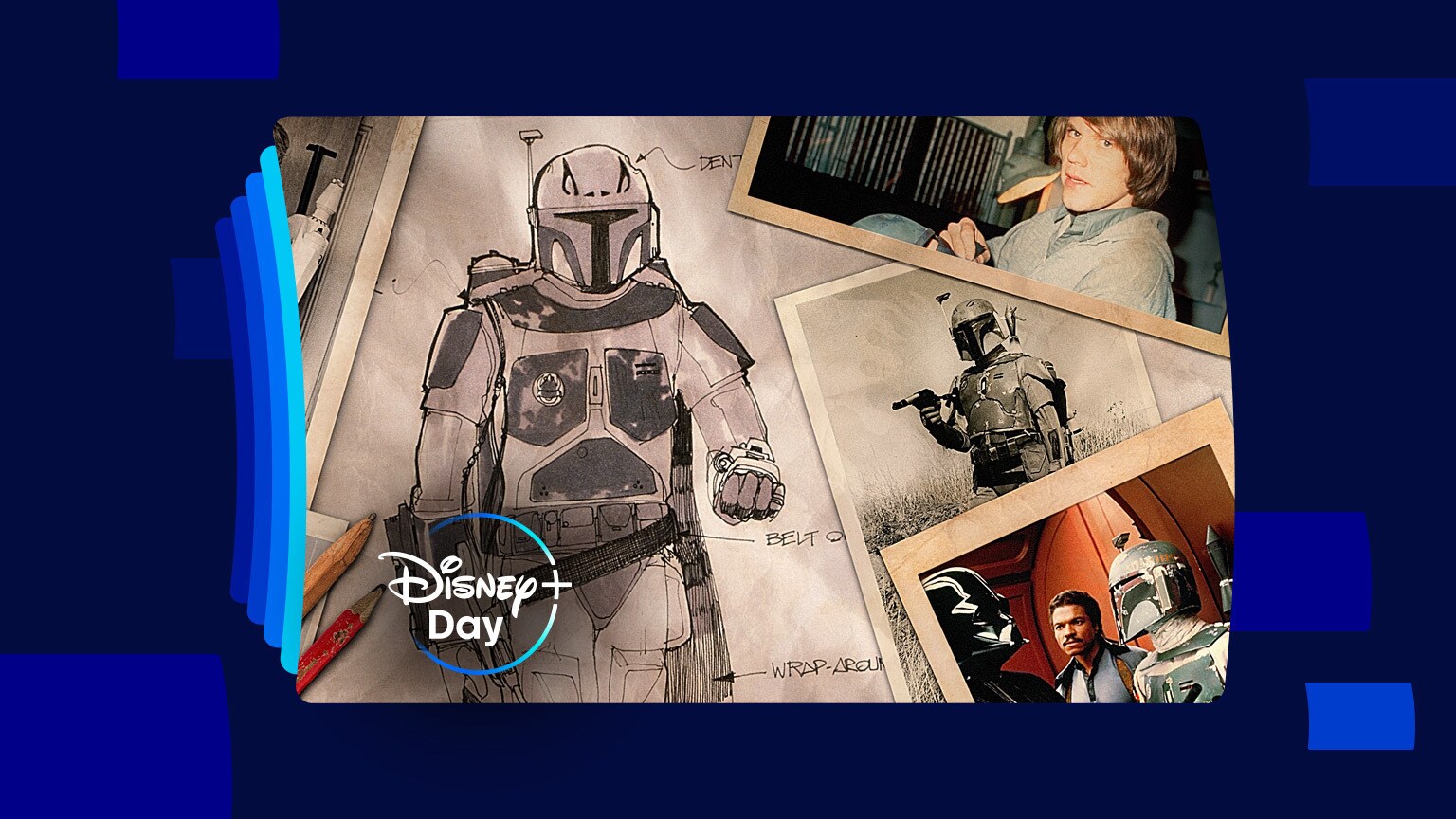You’ve heard the phrase “the magic of moviemaking” so many times that you probably never stop to think about it. But the special effects wizards in Light & Magic, now streaming on Disney+, will absolutely convince you that magic is real. From designing and building the cameras used to film Star Wars from scratch, to merging practical and computer special effects, to pioneering digital filmmaking, the impact that Industrial Light & Magic (ILM) has had on filmmaking is staggering. Here are 20 things we learned about ILM and Star Wars in this compelling documentary series.

1. ILM was built from the ground up, including the cameras used for Star Wars.
“I realized I was going to have to start a company and put together a whole group of people that would just be specifically for making Star Wars,” said George Lucas in 1979. It started with John Dykstra, who had worked previously in effects for a sci-fi movie, and his network of effects aficionados became some of the first ILM crew. They crafted everything from the ship models to the motion-control camera system used to shoot them in a sweltering warehouse in Van Nuys, California.
2. The original Star Wars effects crew shared a common movie in their origin story: The 7th Voyage of Sinbad.
The 1958 adventure film by Ray Harryhausen featured mind-blowing stop motion animation. It quickly captured the boyhood imaginations of future ILMers Phil Tippett, Dennis Muren, and Ken Ralston. “The 7th Voyage of Sinbad just melted my brain,” says Ralston in Light & Magic.
3. George Lucas envisioned the rebel fleet as hotrods.
The original X-wing, Y-wing, and TIE fighter designs were incredible, but looked clean and manufactured. Lucas asked concept artist Joe Johnston to imagine the ships as pieced-together “hotrods” designed to outrun the stark Imperial fleet. Johnston gave the rebel ships their used, hodge-podge look.
4. Joe Johnston was inspired by dirty dishes when designing the Millennium Falcon.
Johnston was also tasked with redesigning the Falcon when the original design was deemed too similar to another ship on television. Under pressure and mentally blocked, Johnston was sitting in the kitchen when he spotted plates on the counter. He imagined sandwiching two together like hamburger buns to create a saucer-like ship. The Millennium Falcon started to take shape.
5. The first concept for Star Wars was a science fiction serial like Flash Gordon or Buck Rogers combined with the effects of 2001: A Space Odyssey.
After the success of American Graffiti, Lucas turned his attention to an entirely different idea. Mixing the advanced special effects facilitated by Stanley Kubrick and the adventure of classic sci-fi movie serials intrigued him. “That was about all I had,” Lucas recalls in Light & Magic. “I was just searching for a story.”
6. George Lucas relaxed by gluing pieces on some of the ship models.
The making of Star Wars: A New Hope was so stressful that it took a toll on George Lucas mentally and physically. He found his happy place in the model shop. “Some of the times he was happiest was when he would go into the model shop and glue parts on a spaceship,” says Johnston. “He really loved to do that.”
7. The creatures in the cantina and Jabba’s palace were often performed by their creators, including Phil Tippett.
Phil Tippett and Jon Berg weren’t just the co-creators of the creepy aliens in the cantina; they were sometimes the creatures themselves. “George put us in our own masks and the costume department would dress us up,” Tippett says in the documentary. He even climbed into the Max Rebo puppet to do a little dance during the production of Star Wars: Return of the Jedi.
8. Part of the Death Star trench run was filmed in the ILM parking lot.
A vital scene in the action-packed space battle at the end of A New Hope was shot in the back of a pickup truck in a sunny concrete lot -- and you can see it for yourself in Light & Magic. The camera had to be moving at 20 miles an hour, John Dysktra remembers, and the explosion was set off as the truck drove by.
9. ILM moved to the San Francisco area on Kerner Blvd., which inspired the codename for the company.
After the success of Star Wars, Lucas moved Industrial Light & Magic to Marin County in California. The sign on the door read “The Kerner Company,” the public-facing name used for the company. If you listen closely in Light & Magic, veterans of filmmaking like Steven Spielberg sometimes refer to ILM as “Kerner” while sharing their memories.
10. The Battle of Hoth was inspired in part by a Russian film, Alexander Nevsky.
Alexander Nevsky was a Russian film released in 1938. The black-and-white historical drama included an infantry battle on an icy plain, and Lucas took it to Johnston for inspiration for creating the Battle of Hoth. “I remember him distinctly saying, ‘I don’t want it to look like this. I want it to feel like this,’” says Johnston.



















